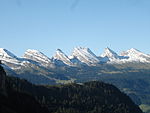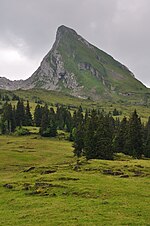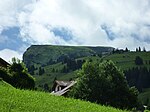Zuestoll
Appenzell AlpsCanton of St. Gallen geography stubsMountains of SwitzerlandMountains of the AlpsMountains of the canton of St. Gallen

The Zuestoll is one of the peaks of the Churfirsten group, located in the Appenzell Alps. It lies between the valley of Toggenburg and Lake Walenstadt in the canton of St. Gallen. The summit is easily accessible by a trail on the northern side.
Excerpt from the Wikipedia article Zuestoll (License: CC BY-SA 3.0, Authors, Images).Zuestoll
Schnüerliweg,
Geographical coordinates (GPS) Address Nearby Places Show on map
Geographical coordinates (GPS)
| Latitude | Longitude |
|---|---|
| N 47.154444444444 ° | E 9.2858333333333 ° |
Address
Schnüerliweg
Schnüerliweg
8881
St. Gallen, Switzerland
Open on Google Maps










